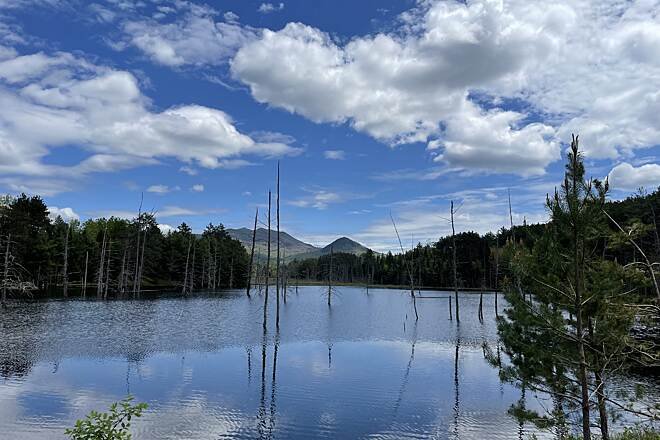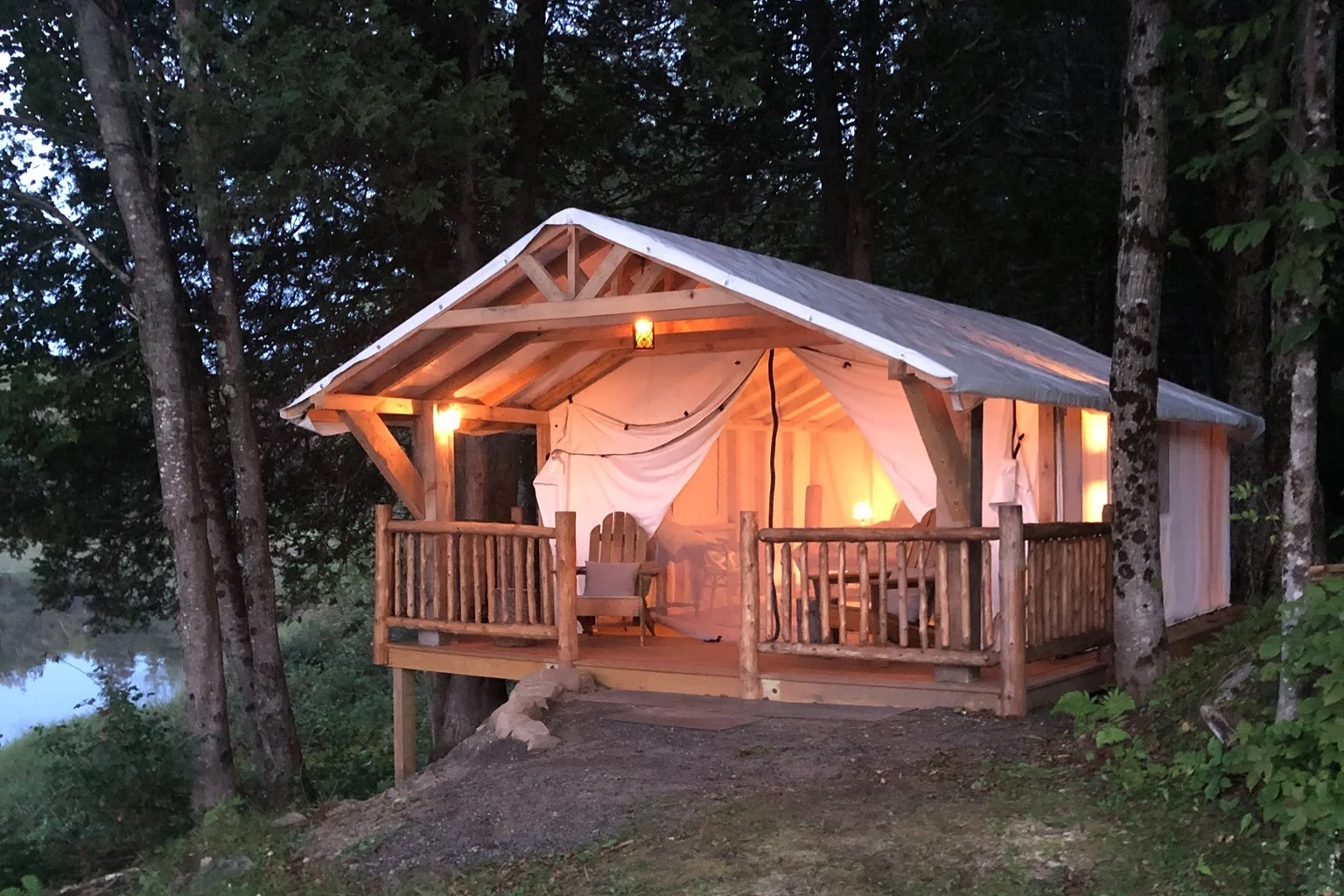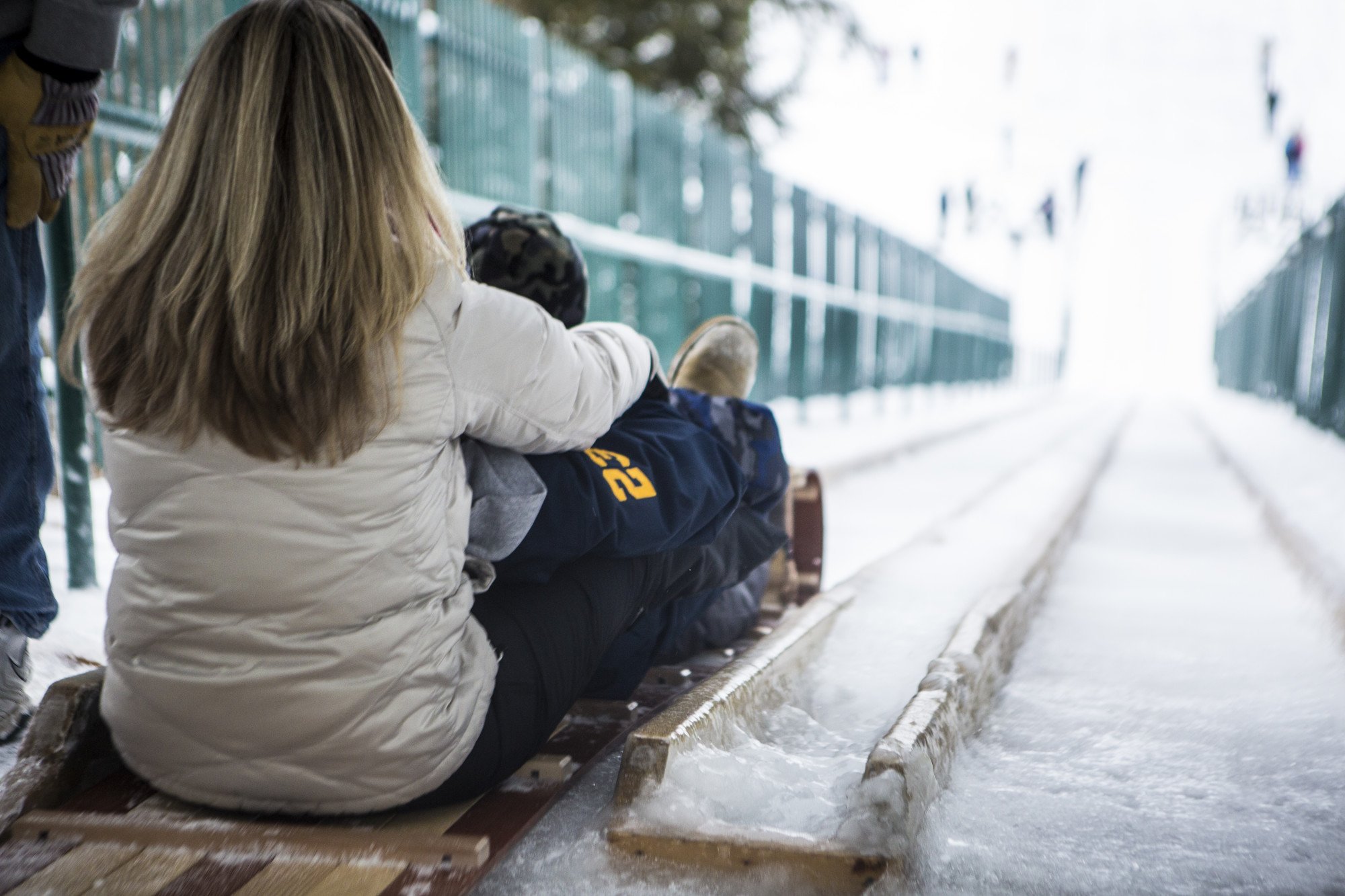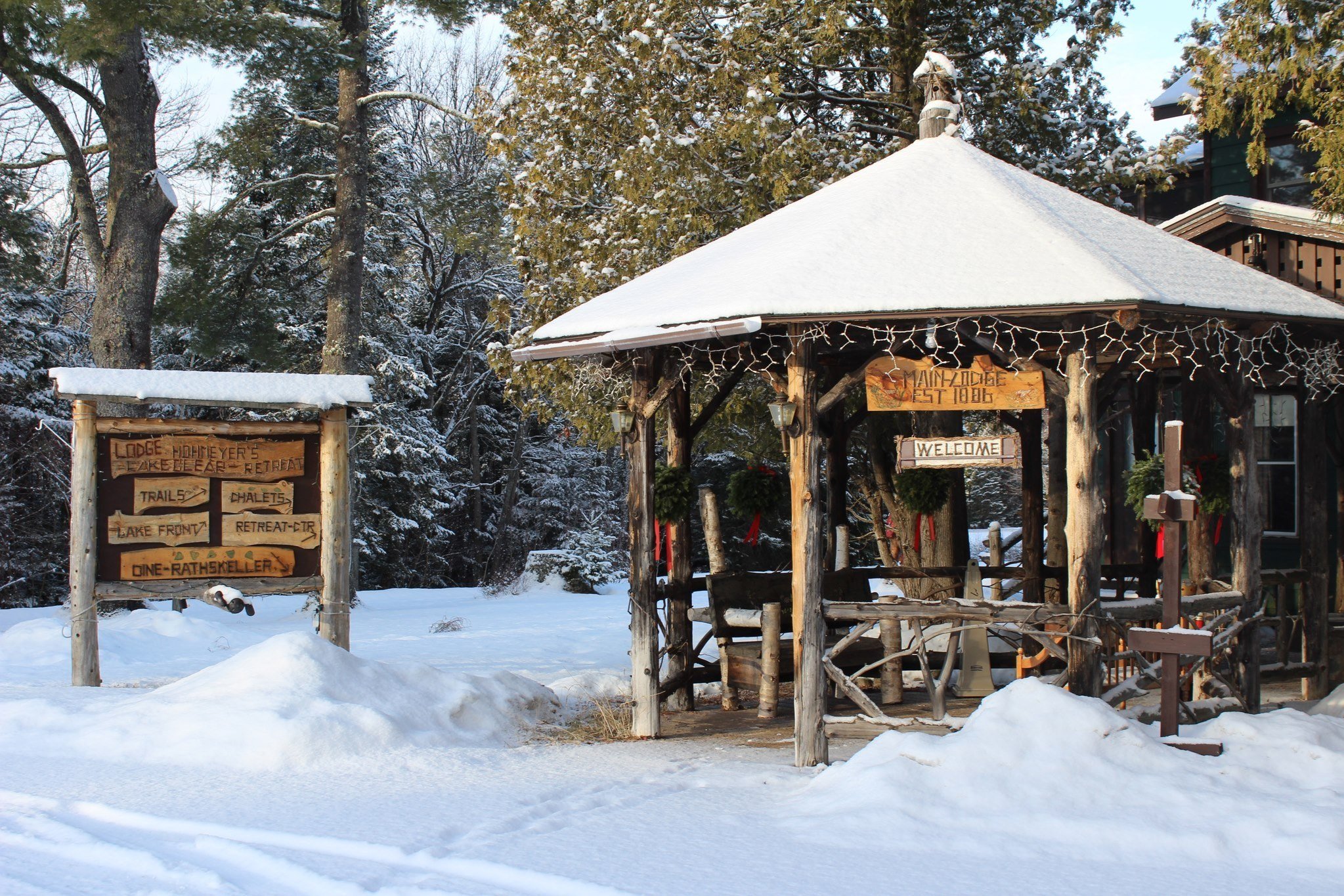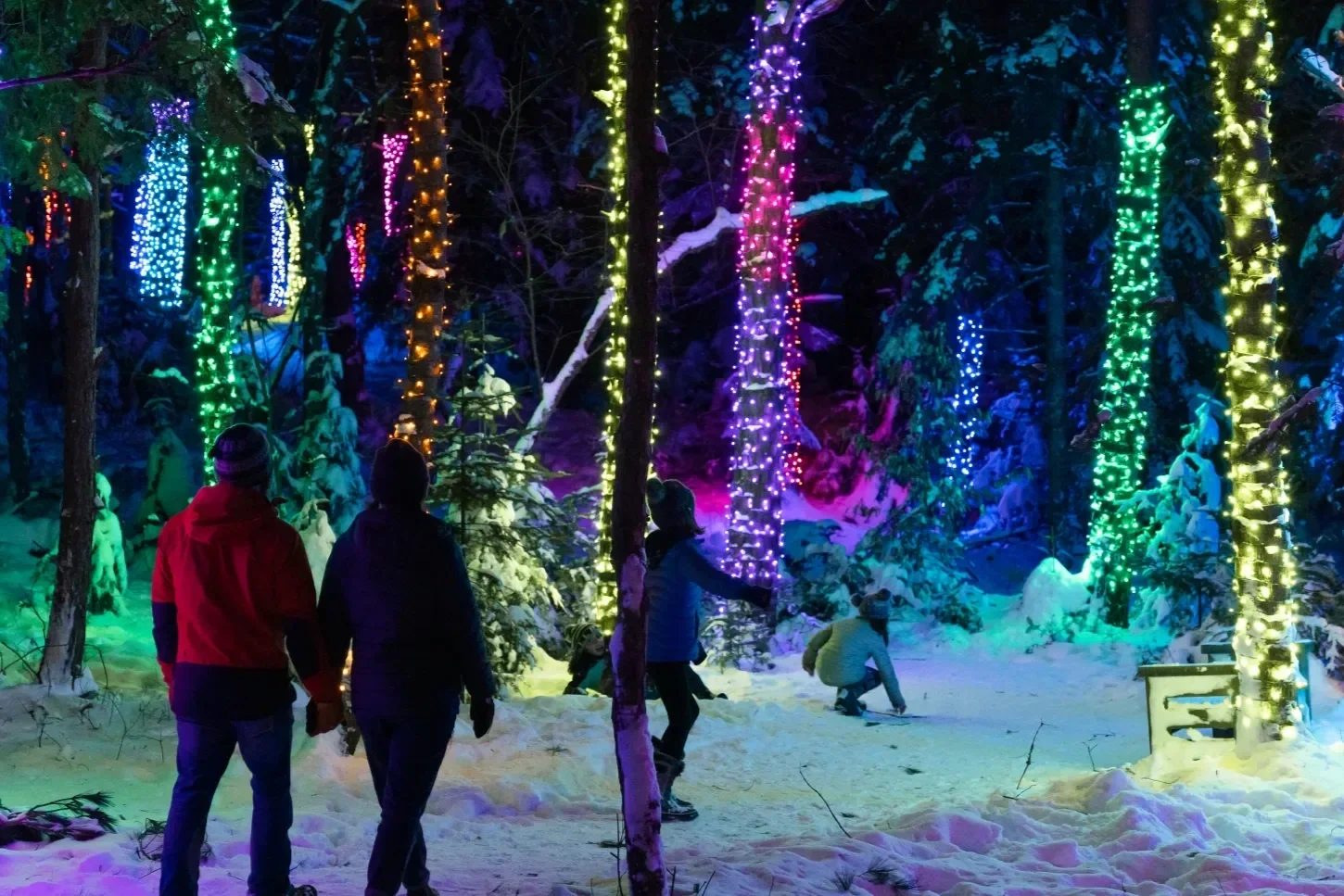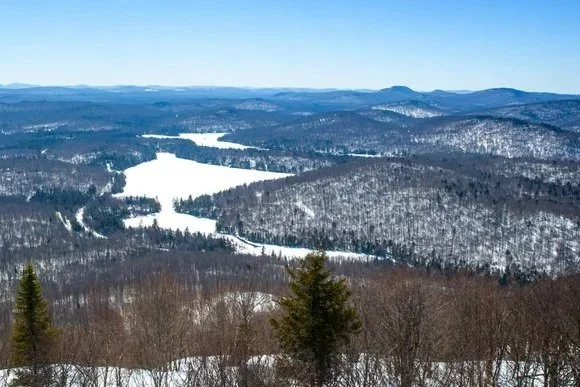Exploring the Adirondack Rail Trail: Past, Present, and Future
Make the spectacular journey from Lake Placid to Saranac Lake and soon to Tupper Lake.
The first phase of the Adirondack Rail Trail. Photo courtesy LakePlacid.com.
One college summer break, I spent three months in Woods Hole, Massachusetts, working as a housekeeper for a family with a large estate on the beautiful Vineyard Sound. Every afternoon, I would have a few hours off, and I would ride my older brother’s beat-up Schwinn ten-speed along a bikeway forged by former railroad lines between Woods Hole and Falmouth and back again.
It was, without a doubt, one of the best parts of my day. I enjoyed incredible views of the Vineyard Sound that changed daily and a perfectly smooth ride on a paved path along the shoreline. I would challenge myself to pedal the entire 20-mile round-trip journey without stopping.
The Adirondack Rail Trail.
Photo courtesy Adirondack Trail Rail.
Since then, I have always thought the Adirondacks must offer a similar experience because of their historic dependence on railroad lines.
Still, little did I know that Adirondackers had been working on creating something similar for nearly 15 years.
The Adirondack Rail Trail, which will eventually traverse a route from Lake Placid to Tupper Lake, is more than just a scenic pathway; it's a captivating journey through time and nature in the heart of the Adirondack Mountains.
Spanning a route that once echoed with the rhythm of locomotives, this four-season trail now offers a tranquil passage year-round for hikers, bikers, x-country skiers, and nature enthusiasts alike.
The Past: A crucial gateway to the Adirondack Park.
The Adirondack Rail Trail's origins hark back to the late 19th century when railroads were pivotal in opening the Adirondack region to tourism and industry. Originally laid down as part of the New York Central Railroad's expansion efforts, the rail line connected remote communities and facilitated the transport of lumber, minerals, and people. Steam engines chugged through dense forests, forging a path that would evolve into a recreational haven.
Just another stunning Adirondack view from the Rail Trail. Photo courtesy: TrailLink.com.
By 1962, trains were no longer the preferred mode of transportation within the Adirondack Park, and the railroad network was already falling into disuse and deterioration.
Flash forward to 2010. After several attempts to repurpose the rail corridor stalled, organizers worked together to advocate for converting the abandoned railroad pathways into recreation trails. By 2014, New York State endorsed a plan to transform the 34 miles between Lake Placid and Tupper Lake into a multi-use recreation trail. Note: This is a vast oversimplification of what it took to make this happen. Read the fascinating history of how the Rail Trail came to be.
Present-day pleasure: scenic beauty and recreation.
The first 10 miles of the Rail Trail, which opened on December 1, 2023, connects the towns of Lake Placid and Saranac Lake. Starting at the trail's easternmost endpoint in Lake Placid, the home of the 1980 Winter Olympics, the trail travels west from the Lake Placid Train Depot along a crushed-stone surface. From there, the trail dips into the Adirondack Wilderness, skirting alongside Ray Brook and traveling through the woods for most of its route before reaching Saranac Lake.
Adirondack Rail Trail. Photo courtesy LakePlacid.com.
The 2.5 miles of the trail within the village of Saranac Lake are paved and pass by Lake Flower and downtown Saranac Lake, which is filled with restaurants, shops, galleries and other worthwhile excursions. The trail then meets its current western trailhead at the Saranac Lake Train Depot.
The Adirondack Rail Trail stretches across gorgeous landscapes today, offering a tapestry of natural wonders. Traversing through dense pine forests, alongside serene lakes, and over bridges, the trail provides a glimpse into the region's ecological diversity. Seasonal changes paint the trail in different hues, from the vibrant greens of summer to the fiery reds and golds of autumn.
Beyond its natural beauty, the trail beckons adventurers of all kinds. Cyclists pedal leisurely along its smooth paths, families hike to hidden picnic spots, and birdwatchers capture glimpses of elusive species among the branches. More than 50 species of mammals, 35 species of reptiles and amphibians, and hundreds of bird species inhabit or pass through the Adirondacks at one time of the year or another, so you might catch sight of wildlife during your trip.
Wildlife on the Adirondack Rail Trail.
For people who fish, there are fantastic opportunities that can be accessed by the rail trail, from remote brook trout ponds to large lake trout and land-locked Atlantic salmon lakes to largemouth and smallmouth bass waters and some excellent stream fishing for trout. Waters adjacent to the Adirondack Rail Trail contains superb examples of what the Adirondacks offer anglers. Along the way, markers and interpretive signs reveal nuggets of history, recounting tales of pioneering railroaders and the communities they served.
The future: expansion and conservation efforts.
The next phase of the Rail Trail’s construction is already underway. It includes the 15.3-mile Saranac Lake to Floodwood Road section and is expected to conclude by fall 2024.
The last construction phase includes improving the trail's final 8.5-mile segment from Floodwood Road to Tupper Lake. Work will begin in 2024 and conclude in fall 2025.
Winter on the Rail Trail. Photo courtesy Adirondack Trail Rail.
Both of these sections of the Rail Trail are closed during active construction. However, winter recreation will be permitted, including snowmobiling, cross-country skiing, fat tire biking, and snowshoeing.
Looking ahead, the Adirondack Rail Trail faces both challenges and opportunities in its evolution. Conservation efforts are crucial in preserving the trail's natural splendor, ensuring that future generations can continue to enjoy its pristine beauty. Collaborations between environmental groups, government agencies, and local communities aim to maintain ecological balance while enhancing visitor experiences.
The Adirondack Rail Trail is owned and managed by New York State’s Department of Environmental Conservation (NYSDEC). The Adirondack Rail Trail Association, ARTA, works to support, coordinate, and promote the trail's interests and foster vibrant "Trail Town" communities connected by the trail.
The Adirondack Rail Trail epitomizes the fusion of history, natural beauty, and recreational adventure. From its humble beginnings as a vital transportation artery to its current role as a cherished trail, each step reveals a story waiting to be told. Whether you're a history buff, a nature lover, or simply seeking a peaceful escape, the trail offers a tapestry of experiences that celebrate the spirit of the Adirondacks.
As you lace up your hiking boots or saddle up your bike, remember that the Adirondack Rail Trail is more than just a route—it's a journey through time and nature, inviting you to explore, discover, and connect with the essence of this remarkable region.



